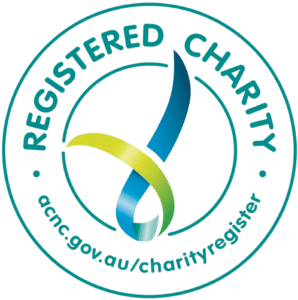
As the temperatures rise and the days grow longer, many of us eagerly anticipate the arrival of warmer months. It is the time of year for us to enjoy the great outdoors, however, for individuals with asthma and other respiratory conditions, the warmer months can bring a host of challenges and potential risks to lung health.

As the temperatures rise and the days grow longer, many of us eagerly anticipate the arrival of warmer months. It is the time of year for us to enjoy the great outdoors, however, for individuals with asthma and other respiratory conditions, the warmer months can bring a host of challenges and potential risks to lung health.
So, what are some of the environmental impacts people with lung conditions need to consider?
Thunderstorms are a natural and common occurrence during the Australian summer. However, for some individuals, especially those with respiratory conditions like asthma, thunderstorms can pose a hidden threat known as “thunderstorm asthma.” This rare but potentially life-threatening phenomenon occurs when there are rapid spikes in asthma attacks associated with thunderstorm events during high pollen seasons.
During thunderstorm events, wind and rain can cause whole pollen grains (such as rye grass) to be taken up into storm clouds. The moisture in the air bursts pollen grains into small particles which are then spread by dry outflows of air in front of the storms.
Anyone can be affected by thunderstorm asthma, however people with asthma and those with pollen allergy and/or hay fever are most at risk.
What can you do to reduce the risk of thunderstorm asthma on your lung health?
Bushfire smoke poses a significant risk to human health. Bushfire smoke has harmful chemicals like carbon dioxide, carbon monoxide, and nitrogen oxides. These chemicals can travel through the air and affect our health, even if the fire is far away.
The Black Summer bushfires of 2019/20 in Australian was estimated to have caused more than 400 premature deaths, 33 direct fatalities, and exposed millions of people to serious levels of air-pollution.
Bushfire smoke can impact anyone, and increase the risk of acute symptoms like breathlessness, wheeze, cough, and throat irritation. Bushfire smoke can be harmful to people with respiratory conditions and vulnerable groups such as pregnant women, children, and the elderly. In some cases, it can even lead to hospitalisation. Researchers have also found symptoms of bushfire exposure can continue long after the initial exposure.
“People who have asthma and are exposed to bushfire smoke have worsened symptoms often straight away, but we also know people who are exposed to bushfire smoke have worsened symptoms weeks, months and often years afterwards,” said Dr Henry Gomez from HMRI’s Immune Health Research Program and also a Rural Fire Service volunteer for over 10 years.

HMRI researchers Dr Henry Gomez, Dr Tatt-Jhong Haw, Professor Doan Ngo and Associate Professor Jay Horvat with the Wallarah Rural Fire Service.
What can you do to reduce the risk of bushfire smoke on your lung health?
The Severe Asthma Toolkit, developed by a team of HMRI researchers led by Professor Vanessa McDonald and Professor Peter Gibson, provides a wealth of information for people with asthma and health professionals who treat people with asthma. The Toolkit was developed in response to limited dedicated resources to inform management for people with severe asthma.
The Toolkit features a range of resources and infographics to equip people with asthma with the right information to navigate challenging events that may impact their asthma or lung health.
Download factsheets on:
The Asthma in Pregnancy Toolkit, was developed to provide a centralised source of evidence-based information for pregnant women seeking to improve their asthma management skills, and for the health professionals who care for them. This Toolkit was developed by HMRI Asthma and Breathing researchers, led by Associate Professor Vanessa Murphy.
HMRI would like to acknowledge the Traditional Custodians of the land on which we work and live, the Awabakal and Worimi peoples, and pay our respects to Elders past and present. We recognise and respect their cultural heritage and beliefs and their continued connection to their land.

Hunter Medical Research Institute
We’re taking healthy further.
Locked Bag 1000
New Lambton
NSW, Australia, 2305



This site is protected by reCAPTCHA and the Google Privacy Policy and Terms of Service apply.
Copyright © 2024 Hunter Medical Research Institute | ABN: 27 081 436 919
Site by Marlin Communications
